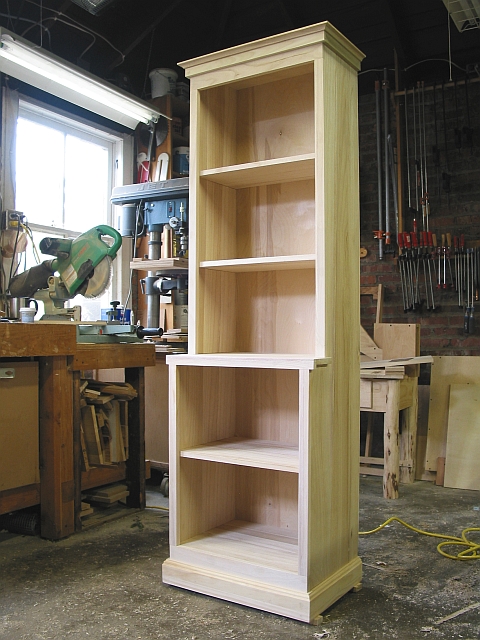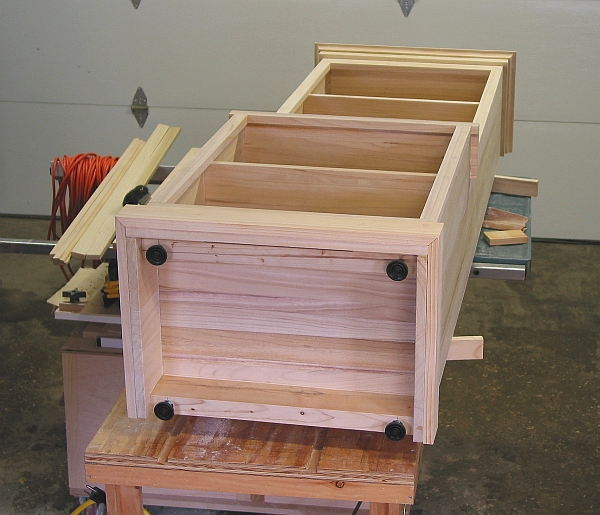The 2009 Oyster/Adams Auction
|
Light as a feather! [right] This year for the Oyster/Adams fundraising auction I was asked to build a fairly straight forward bookshelf unit. It has a deeper base section with a shallower shelving unit on top. I spent a long time trying to decide whether to build this as two separate units, or as a single unit. The former would be somewhat simpler, but I wasn't happy with any of my ideas about how to attach the top to the bottom. If I built the top like a traditional case, with a flat base, and just rested it on the bottom unit, I thought it would look amateurish. On the other hand if I tried to join the sides of the top unit to the base unit with dowels or screws, I would have be very careful with alignment, and there would always be a visible joint or seam along the sides. Of course I could have covered that up with a strip of moulding, but I just didn't like that idea. So in the end I elected to build the carcass as a single unit. This meant that I had to make an inside 90 degree angle cut where the bottom half stepped back to the top half. I started the long rip on the table saw, stopping the cut about an inch shy of the actual 90 degree angle. I finished up the cut by hand with a Japanese ryoba, which worked out nicely. Encouraged by the result, I did the same for the other leg of the angle cut (the cross cut) again using my ryoba freehand. I have come to love Japanese pull saws and more and more I find myself looking for excuses to employ them for small cuts and trim cuts, or in situations where I don't want to be bothered with all the setup required to use a table saw (e.g.-for one or two tenons). [below] A note about the base: In order to prevent racking, I decided to install some adjustable feet, which are almost completely concealed by the base trim moulding. I mounted them to lengths of 2x4 which I first cleaned up on the table saw and then trimmed to fit within the base. I think this was a success. |
|
Detail of the bookshelf base. [left] Concerning the wood, this was one of the weirdest wood experiences I have ever had. I originally thought that I would build the shelf unit from beech veneer plywood. However, the Oyster kids were going to paint and decorate the final piece, which meant that the veneer would be wasted. I would also have the extra step of breaking up the sheet of plywood - not a big step but while contemplating this I saw a display in Home Depot announcing: Hardwood Boards. Now here is where it gets really weird: each board, which consisted of narrow strips edge glued, was individually wrapped in plastic (?). I have never seen this before. I have seen and used Chilean wood made up of edge glued strips but it was never shrink wrapped. I wasn't surprised to see that this wood was "manufactured" in China. Nonetheless, I decided to take the plunge and give the stuff a try. When I got it home and unwrapped it was even stranger - this was the softest "hard" wood I have ever encountered, seriously, it rivaled balsa. I could leave a fingernail impression with almost no effort. Well, I was disappointed to say the least, but since I didn't feel like schlepping it all back to Home Depot, I went ahead and built the project. I did make sure to tell the people who were going to decorate it to take care lest they accidentally mar the surface. I guess the silver lining to this was that the completed project was light enough that I could move it around easily! |
|
|

